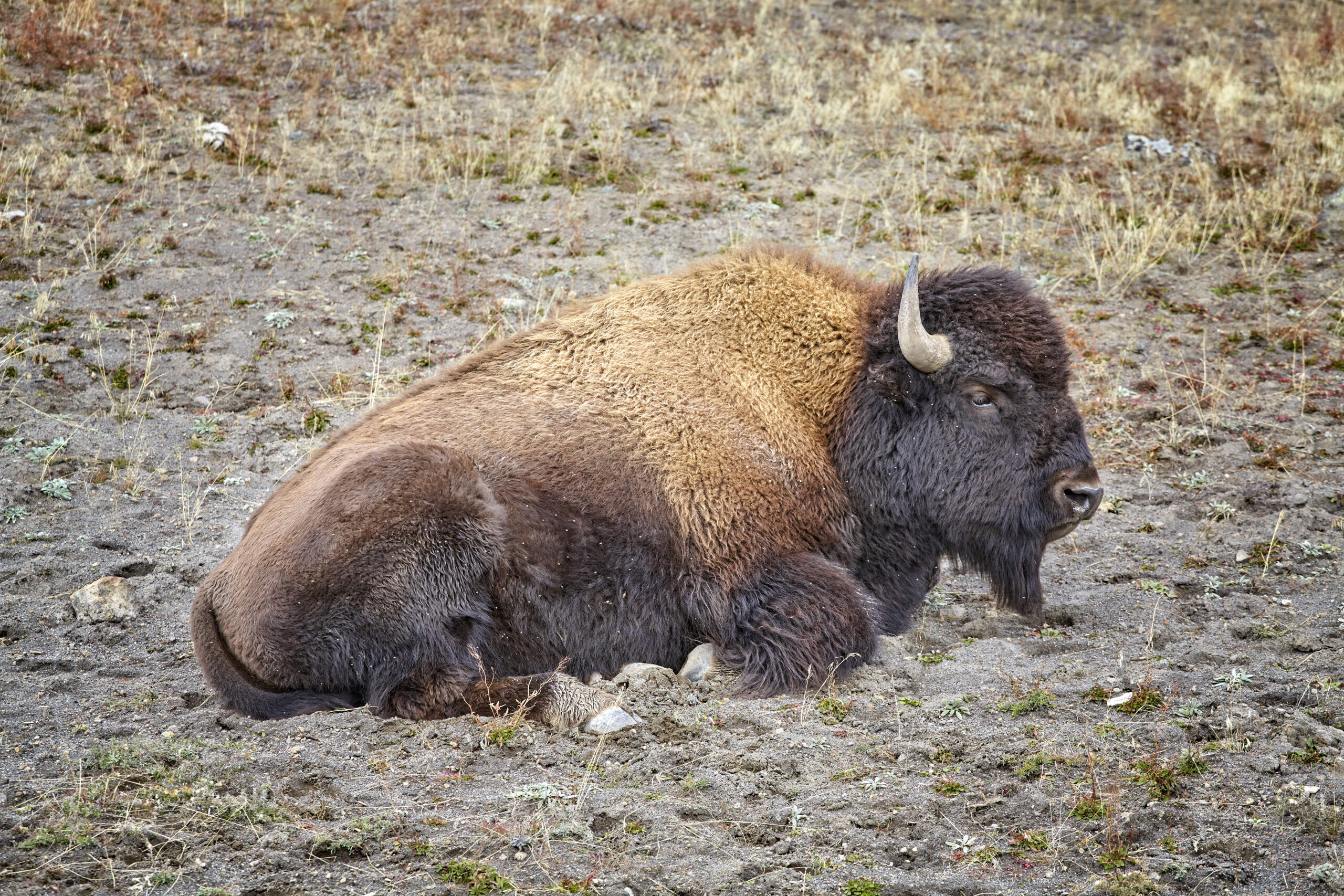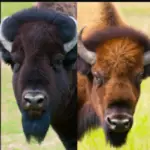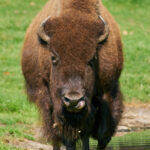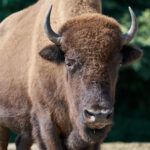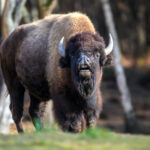Understanding the Bison Anatomy
Defining the Bison Species
Bison, scientifically known as Bison bison, are large herbivorous mammals that belong to the Bovidae family. They are native to North America and are characterized by their impressive size and robust build. Bison are closely related to other bovine species such as domestic cattle, but they have unique anatomical features, including the prominent hump on their back.
Anatomy of a Bison
To understand the significance of the bison hump, it is essential to have a basic understanding of the overall anatomy of these magnificent creatures. Bison have a massive head with a broad forehead and a pair of long, curved horns.
Their body is covered with a thick, shaggy coat of fur, which protects them from harsh weather conditions. They have a muscular hump on their back, followed by a powerful neck, sturdy limbs, and a short, stubby tail.
Detailed Look into Bison Hump
One of the most intriguing features of bison anatomy is the hump located on its back. The hump is a distinct bulge made up of a combination of muscle and fat tissues. It sits between the shoulders of the bison, just behind the head. The hump varies in size and shape among individuals and species, but it is generally more prominent in male bison.
Importance of Bison Humps: The Functional Theory
Muscle Mass in the Hump
The bison hump serves several important functions that contribute to their survival in their natural habitat. One of the primary purposes of the hump is to provide a reserve of dense, powerful muscles.
The muscles in the hump are specifically developed to support the massive weight of the head and neck, allowing bison to forage for food by lowering their heads to the ground. The muscle mass in the hump also aids in locomotion, enabling bison to charge, run, and navigate rugged terrains effectively.
Hump as a Fat Reserve
In addition to its muscular composition, the bison hump also acts as a significant fat reserve. During favorable seasons when food is plentiful, bison accumulate fat stores in their hump.
This serves as an energy reserve, particularly during harsh winters or periods of food scarcity. The fat stored in the hump can be metabolized and utilized by the body for sustenance when food sources are limited.
Use of Hump in Thermo-regulation
Bison inhabit a wide range of climates, from the scorching summers of the Great Plains to the frigid winters of the northern regions.
The hump plays a crucial role in thermo-regulation, helping bison regulate their body temperature in extreme weather conditions. The dense muscles and fat tissues in the hump act as insulation, trapping heat during cold weather and minimizing heat accumulation during hot weather.
Role of Hump in Survival Against Predators
The bison hump also plays a vital role in defending against predators. When threatened by predators such as wolves or bears, bison adopt a defensive posture by lowering their heads and using their hump as a shield.
The robust muscle and fat tissues in the hump provide a protective barrier, making it harder for predators to inflict fatal injuries. The hump serves as a physical advantage that enhances the bison’s chances of survival in the face of predation.
Hump and Bison’s Lifestyle
Correlation of Hump and Bison’s Eating Habits
It is interesting to note the correlation between the bison hump and their eating habits. Bison are herbivores and primarily graze on grasses and other vegetation.
Their hump, with its muscular and fatty composition, enables them to maintain their grazing habits. By having a pronounced hump, bison can lower their heads closer to the ground, making it easier for them to reach and consume the vegetation they rely on for sustenance.
How The Hump Helps During the Winter Months
Bison inhabit regions that experience severe winters, characterized by heavy snowfall and limited food availability. During these harsh months, the hump’s fat reserve becomes crucial for the survival of bison.
As the grasses and vegetation become scarce, bison rely on the energy stored in their humps to sustain themselves until better food sources become accessible. The hump acts as a nutritional lifeline, enabling bison to endure the challenging winter conditions.
Do Bison Mating Season Affect the Size of their Humps?
During the bison mating season, the size of their humps may be influenced. While the primary purpose of the hump is to store fat reserves, bison mating season information suggests that male bison with larger humps may have higher mating success. These humps are an important indicator of strength and condition, attracting potential mates and asserting dominance within the herd.
Dissecting the Hump: A Closer Examination
Composition of the Hump
To gain a deeper understanding of the bison hump, it is essential to examine its composition. The hump consists of a combination of dense muscle tissues and fat deposits.
The muscles in the hump are strong and sturdy, providing support and stability to the bison’s neck and head. The fat deposits, on the other hand, serve as an energy reserve, ensuring the bison’s survival during periods of scarcity.
Variation of Hump Size in Different Bison Species
While the hump is a common characteristic among all bison, the size and shape of the hump can vary between different species. For example, the American bison (Bison bison) typically has a larger and more pronounced hump compared to the European bison (Bison bonasus).
The variation in hump size can be attributed to differences in environmental factors, genetics, and evolutionary adaptations specific to each species.

